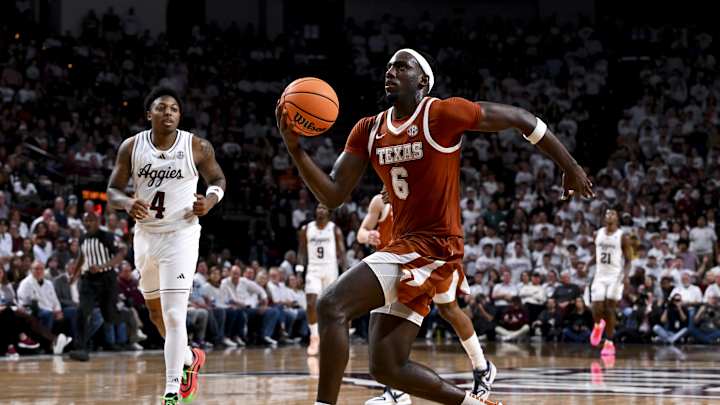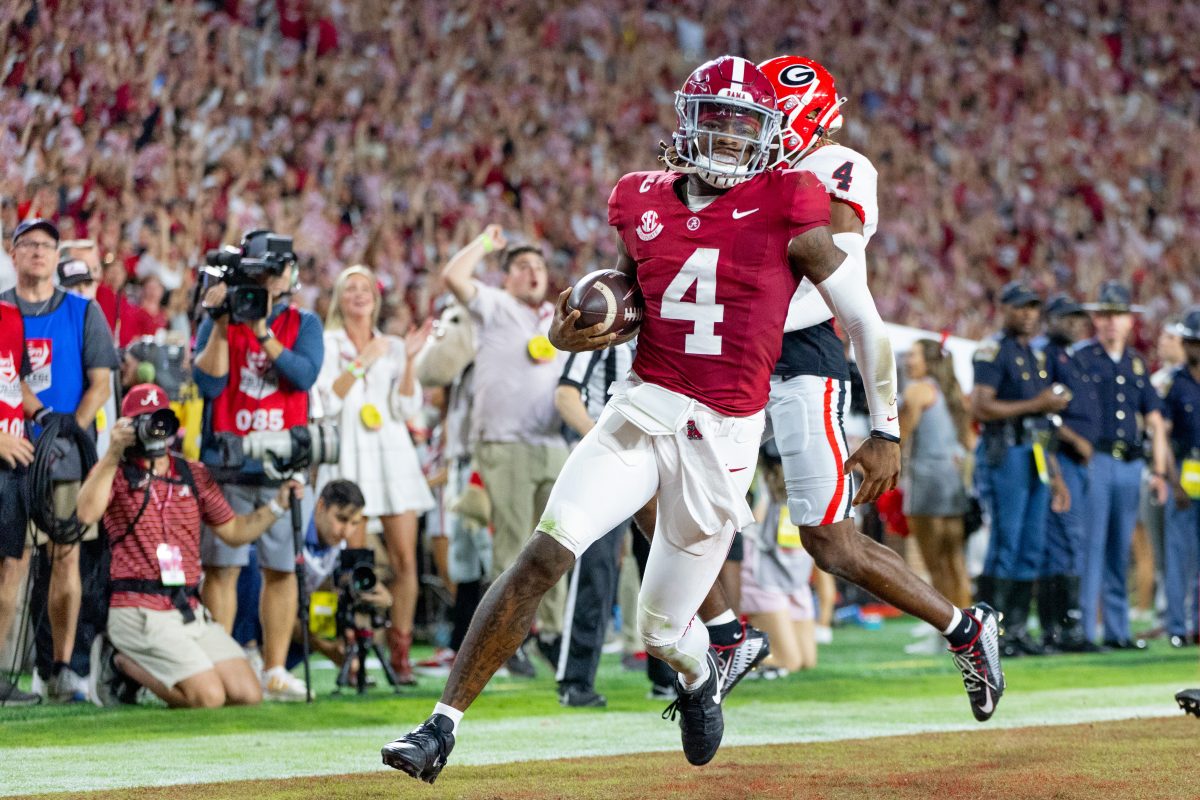The world of college football is filled with high stakes, intense competition, and passionate fans, all of which can lead to heated moments and emotions. However, when those emotions spiral out of control and spill into the realm of hate and vitriol, it casts a shadow over the game itself. Recently, Texas Longhorns’ safety Michael Taaffe found himself at the center of a controversial moment that ignited a wave of hateful backlash after a targeting no-call during a pivotal game. This incident serves as a reminder of how high the stakes can get in college football, both on and off the field.
The Controversial Play: Targeting No-Call
The controversy began during a critical matchup for the Longhorns, where Michael Taaffe, a redshirt junior safety, was involved in a play that many fans and analysts quickly dubbed one of the most contentious moments of the game. Midway through the second quarter, with the game hanging in the balance, Taaffe made a hard hit on an opposing player. The hit appeared to be high and, based on the new rules surrounding targeting, it seemed like a textbook example of a penalty that should be called.
For those unfamiliar with the rule, targeting is a penalty designed to protect players from dangerous hits to the head or neck area. If a player is penalized for targeting, they are ejected from the game, and their team is often dealt a significant setback. In this instance, however, the officials did not throw a flag, and no penalty was called on Taaffe. To many in the stadium and watching at home, this was seen as an egregious no-call, given the nature of the hit and the expectations set by the targeting rule.
The aftermath of the non-call sparked an intense debate. Fans, analysts, and former players alike took to social media to voice their opinions. While some defended Taaffe, arguing that the hit was not intentional or malicious, many others felt that the decision to not penalize him was a clear error, especially given how strictly targeting penalties had been enforced in previous games throughout the season.
The Backlash: Hate Texts and Threats
What followed next was an unsettling and disturbing turn of events. In the days following the game, Michael Taaffe began receiving an outpouring of hateful messages. Many of these messages came in the form of text messages and social media posts. Some people lashed out at Taaffe, accusing him of intentionally trying to hurt the opposing player, while others resorted to racist and personal attacks. The volume of messages grew quickly, with some even crossing the line into threats of violence.
Taaffe, who had always been a stand-up player and a well-respected member of the Longhorns team, was taken aback by the vitriol aimed his way. In interviews after the incident, he spoke about how hurtful it was to see the comments, especially considering the fact that he had not intended to cause harm. In fact, he argued that his hit was not as dangerous as some critics claimed, and that he had acted within the bounds of the game.
“I was just trying to make a play. I never meant to hurt anyone,” Taaffe said in one of his statements to the media. “It’s tough to see people take things to that level and send messages like that. We’re all just playing football, trying to do our best for our team.”
The wave of hate not only shook Taaffe, but it also made a lasting impression on his family, friends, and teammates. Texas Longhorns coach Steve Sarkisian expressed his support for Taaffe, calling the hateful messages “unacceptable.” The Longhorns’ football program issued a statement condemning the actions of those responsible for sending the messages and reaffirming their commitment to supporting Taaffe during this challenging time.
The Reality of Social Media and Hate in Sports
This incident shines a light on the darker side of sports fandom. While the vast majority of fans are passionate and support their teams in positive ways, there remains a subset of individuals who cross the line into harassment and hatred. Social media, unfortunately, has made it easier for these individuals to direct their anger toward athletes, often in harmful and hurtful ways.
While it’s not uncommon for athletes to receive criticism after poor performances or controversial moments, the level of hate and vitriol directed at Taaffe is a disturbing example of how sports can sometimes bring out the worst in people. What should have been a passionate debate over a missed call turned into something far uglier, as hate-filled messages poured in, many targeting Taaffe on a personal level.
What’s more troubling is that this is not an isolated incident. Athletes, particularly in high-profile sports like college football, frequently find themselves the target of online abuse. Whether it’s over a missed shot in basketball, a failed pass in football, or a controversial call in a high-stakes game, athletes are often subjected to toxic comments, threats, and hate. In some cases, this abuse can have real-world consequences, affecting the mental health and well-being of the athletes involved.
A Call for Change: Supporting Athletes Off the Field
The Michael Taaffe incident should serve as a wake-up call for the sports community. It’s essential that fans understand the impact their words can have, not just on the athletes they are criticizing, but on their families, teammates, and communities. The dehumanization of athletes through online abuse is a trend that needs to be addressed, and it’s clear that more needs to be done to create a safer and more supportive environment for all players, regardless of the outcome of a game.
Many sports organizations, including the NCAA and the NFL, have started to take a more active role in addressing issues of online abuse and harassment. Some have implemented policies that allow athletes to report incidents of cyberbullying, and others have taken steps to educate fans about the importance of maintaining respectful behavior online. However, there is still a long way to go before this issue is fully addressed.
Additionally, coaches, teammates, and family members play a crucial role in supporting athletes during these difficult times. When someone like Taaffe faces online abuse, it’s important that the community rallies around them, offering words of encouragement and reminding them that they are more than just their performance on the field. Taaffe’s teammates were quick to speak out in support of him, and their solidarity helped to remind him that he was not alone.
Moving Forward: Learning from the Incident
As Michael Taaffe and the Texas Longhorns move forward from this controversy, it’s clear that the incident has sparked much-needed conversations about the behavior of sports fans, the role of social media, and how athletes should be treated off the field. While the incident has been painful for Taaffe, it has also brought attention to an issue that continues to affect athletes across the globe.
For Taaffe, this moment of adversity could become a turning point in his career. In the face of online hate, he has shown incredible resilience and maturity, handling the situation with grace and determination. As his football career continues, the lessons he has learned from this experience will undoubtedly make him stronger, both on and off the field.
The hope is that the college football community—and sports fans in general—will continue to evolve, recognizing the importance of respecting athletes as human beings first and foremost. As for Michael Taaffe, the best way to combat hate is with resilience, kindness, and a commitment to moving forward. And in the world of sports, that’s exactly what will help him thrive.



